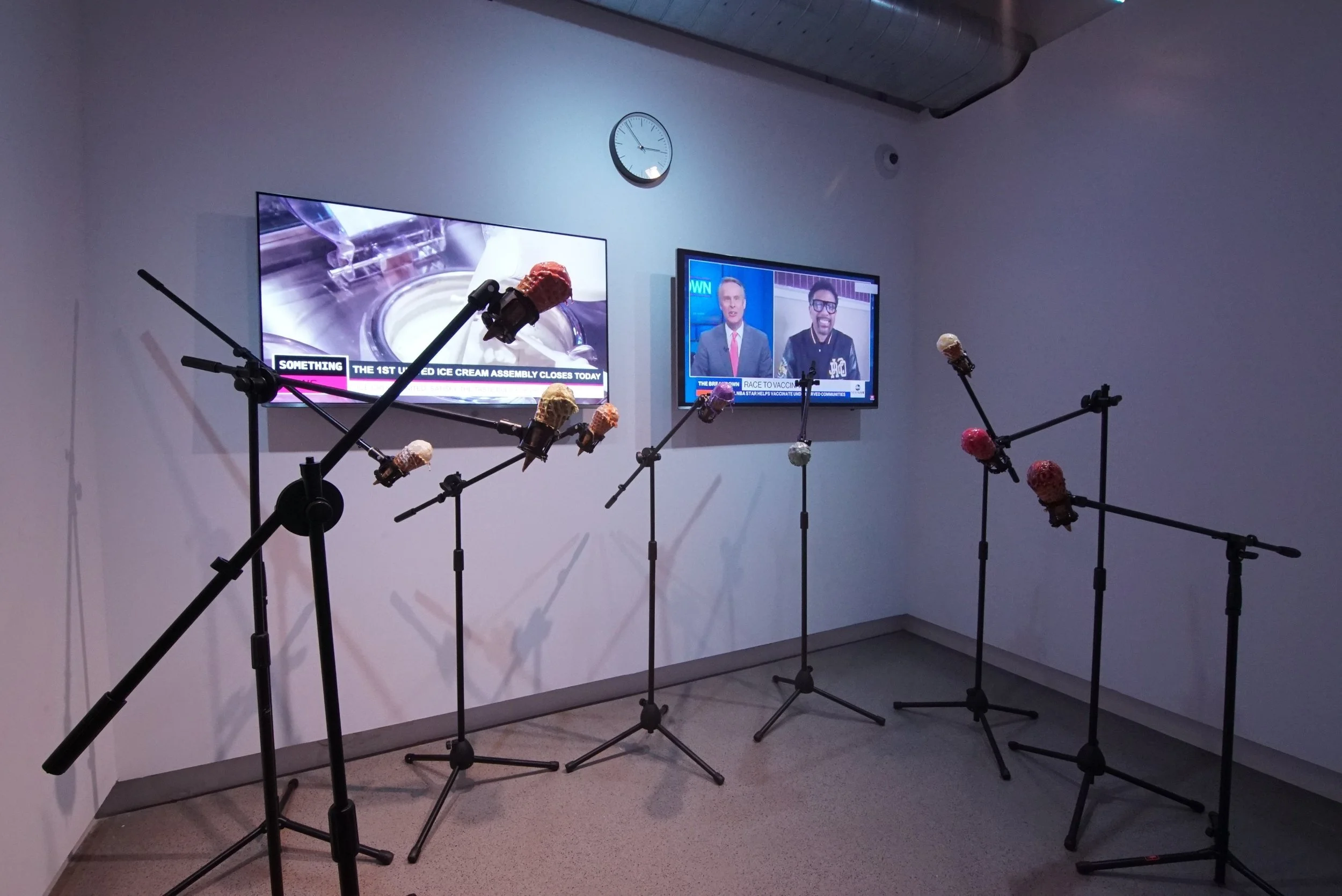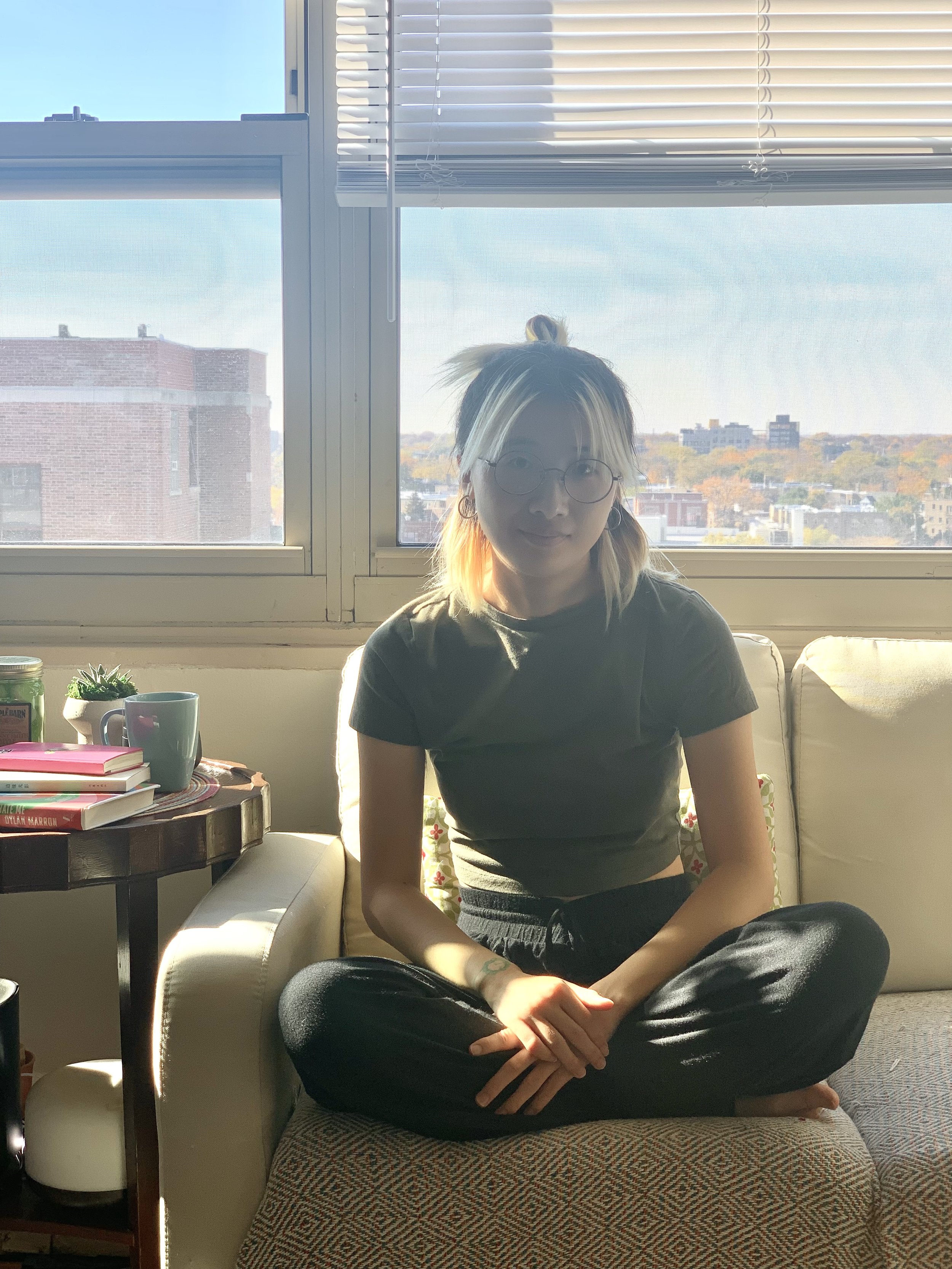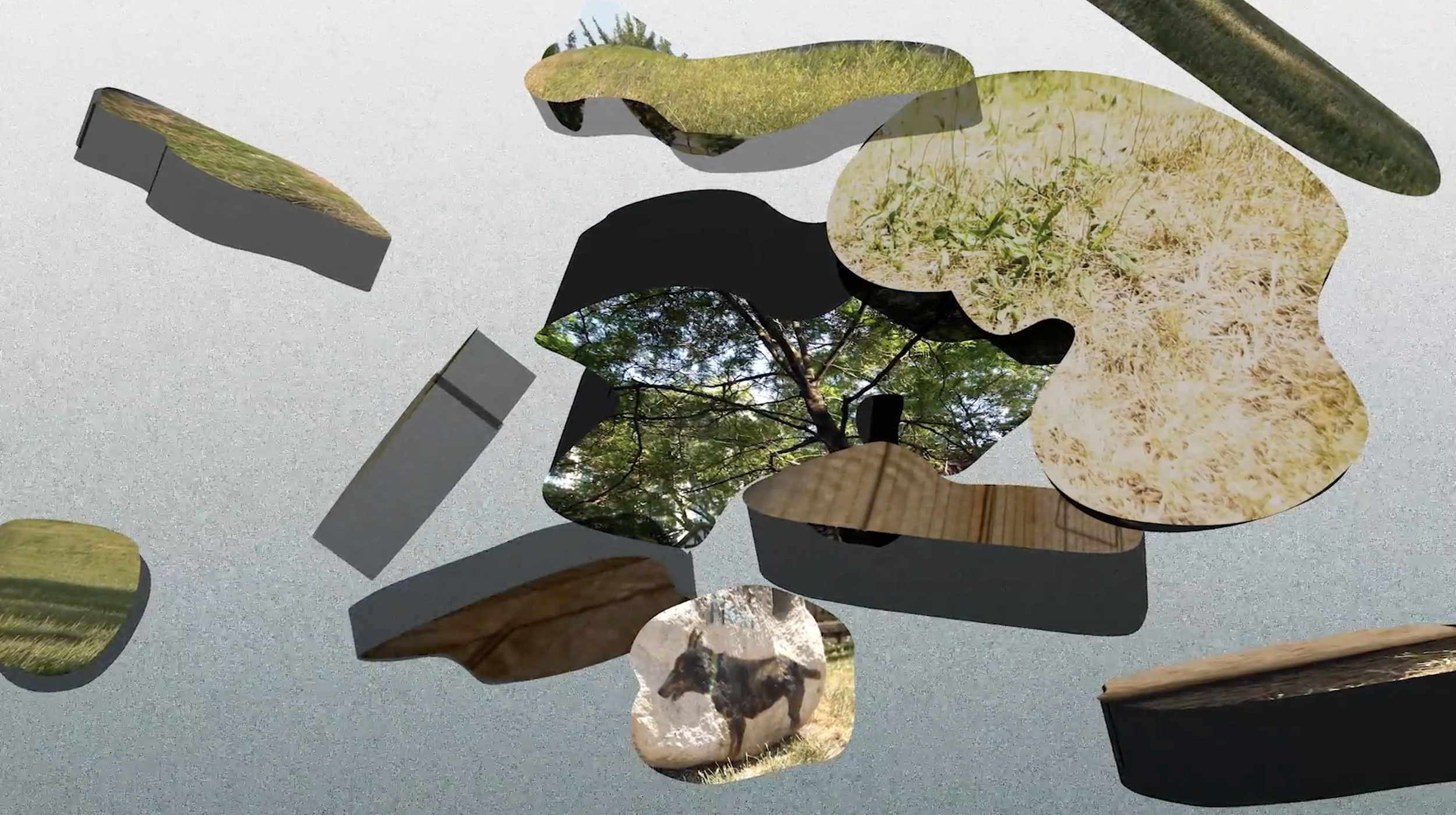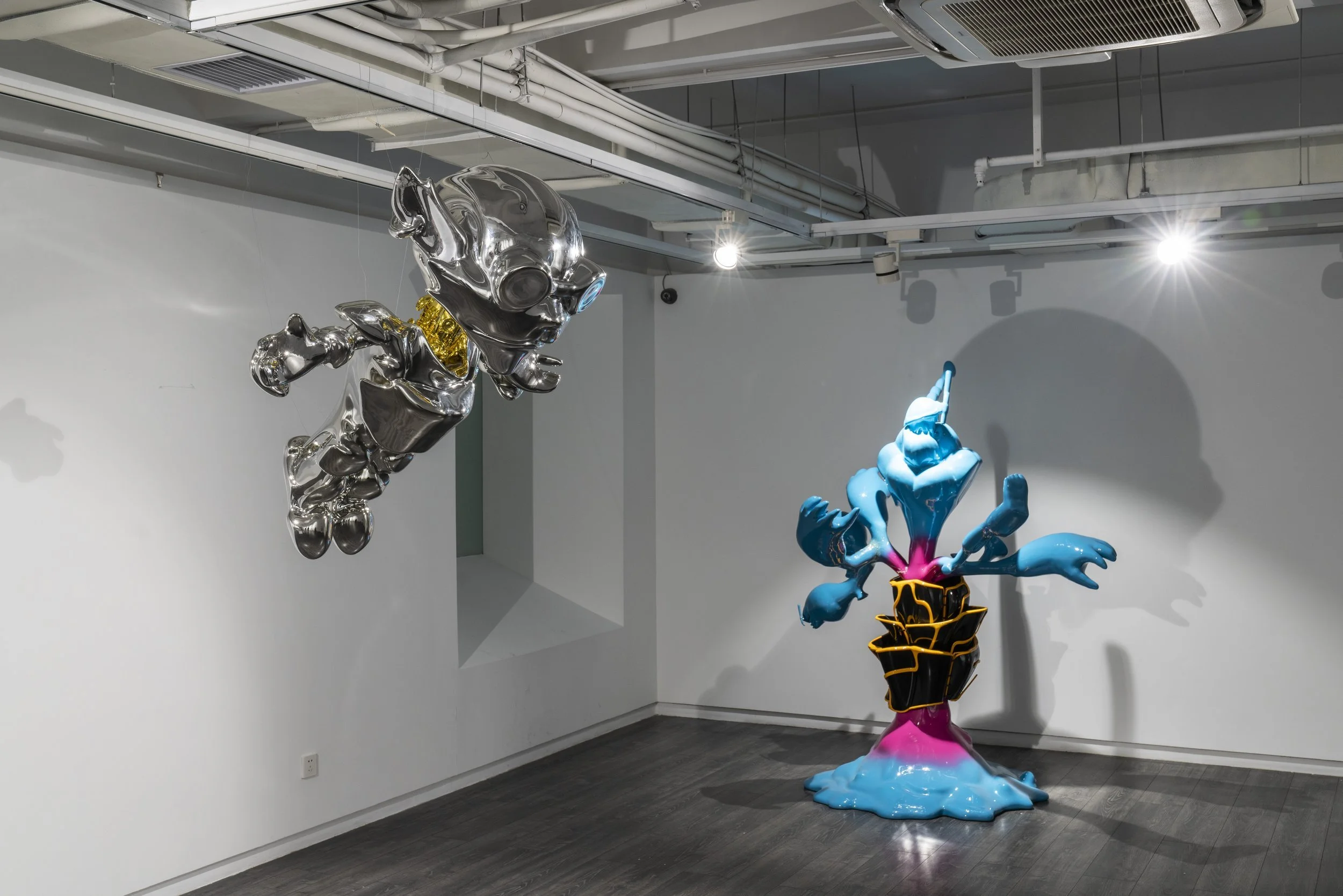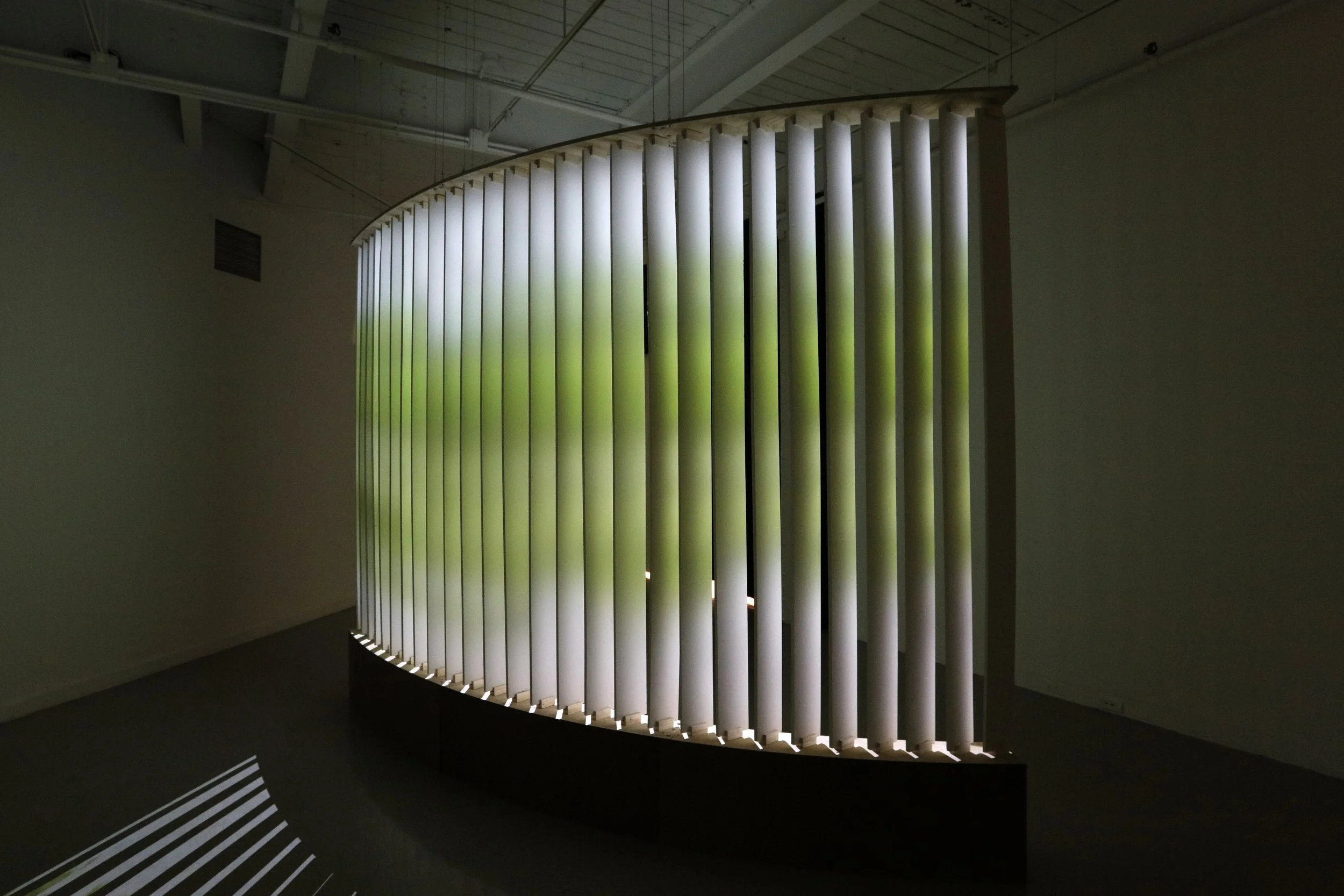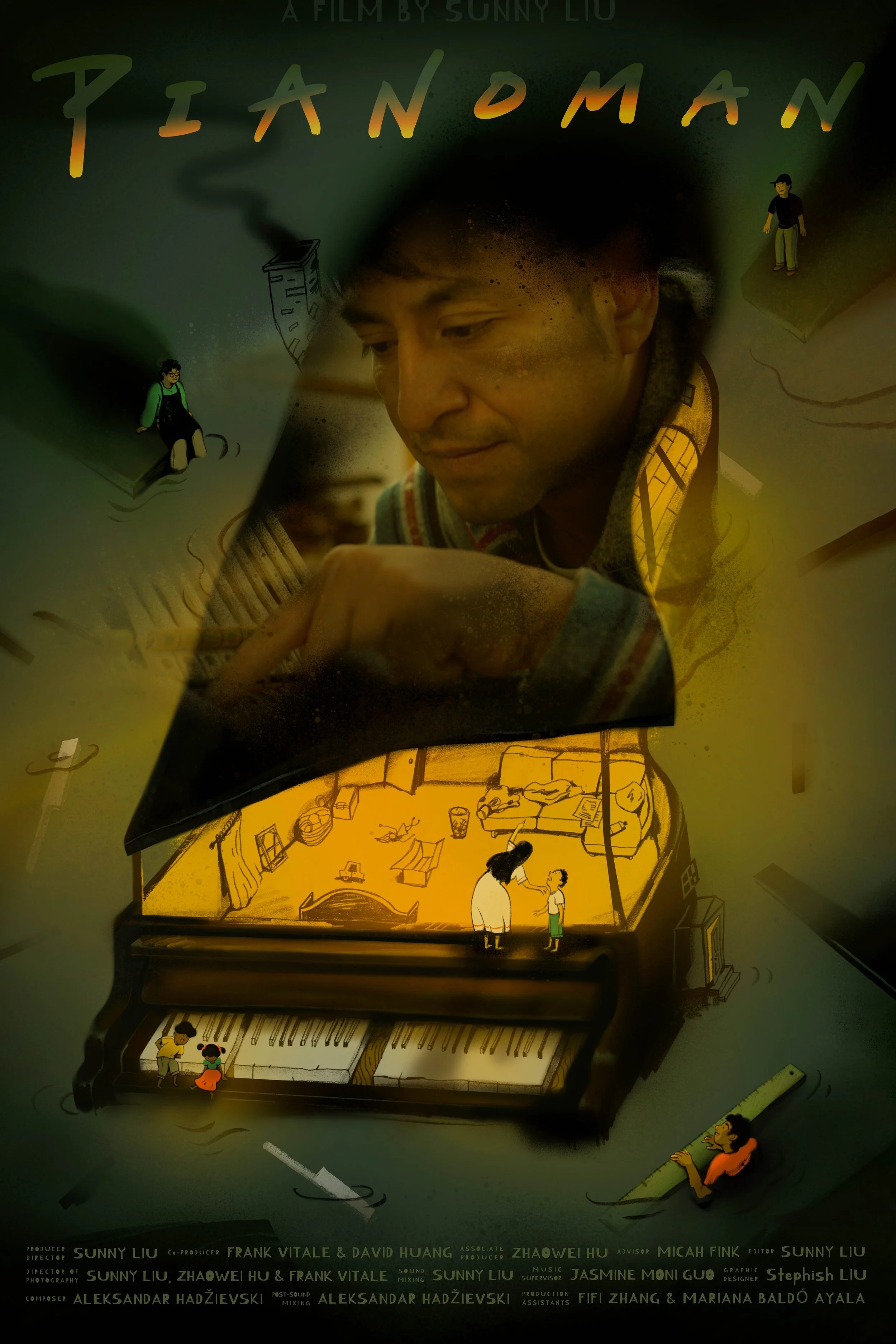10 Questions with Hailing Liu
Hailing Liu (b.1997, Shenzhen, China) is a mixed-media artist, animator, and motion graphic designer working and living in Chicago. They employ diverse media in their art practice: 2D and 3D animation, video composition, writing, sculpture, printing, Augmented Reality, physical and virtual installation.
Focusing on digital culture, images, and media representations in contemporary life, Liu researches images produced as visual communication in capital systems. Liu’s work plays with the cultural meanings and ideas behind the images, subverting and recreating them as their way to respond to social-political changes (especially those in Chinese society). The expression of their work is always humorous, dark, absurd, and ambiguous, with structures that are in between reality and imagination.
Hailing Liu - Portrait
ARTIST STATEMENT
“I am a mixed media artist, an animator, and a motion graphic designer. I employ diverse media in my practice: 2D and 3D animation, video composition, writing, sculpture, printing, physical and virtual (VR & AR) installation. I also started my journey in writing and storytelling recently.
As a digital artist, I am interested in the Internet, Grassroots, and Diasporic culture and the connections among them. Images produced as visual communications in the capital systems are the main influence and inspiration for the body of my work. In my practice, the social and cultural meanings behind images are always subverted and challenged in humor and absurd ways. I hope to invite the audience to rethink the social normality and stereotypes created and reflected by images produced in our society.”
— Hailing Liu
Absences in the Soundscape, HD Video, 03:06, 2021 © Hailing Liu
INTERVIEW
Let’s start from the basics. What is your background, and what studies helped you develop into the artist you are today?
I was born and raised in the coastal town of Shenzhen, China. I received my BFA degree in Art History from the Guangzhou Academy of Fine Arts, China (2019) and an MFA degree in Film, Video, Animation, and New Media from the School of the Art Institute of Chicago, USA (2021). When I was a baby learning to walk, I already knew I was interested in Art. Being keen on cartoons, anime, comics, and games as a young child, I naturally absorbed a lot of popular culture, which definitely influenced my art practice till now. I drew and painted a lot when I was a teenager, but I was unsure of what career I wanted to be in. I knew it should be something related to art. For some personal and external reasons, I was not able to start my artist journey when I was in my undergrad years. Instead, I was doing a theoretical study on art and archaeology, which was not my true interest. As a student from the Art History department, there were also not many chances to engage in art-making at school like students from the fine art department. As Art History students, we were expected to focus on theory but not art making. Even so, my desire to create was so strong that I skipped department classes sometimes, sneaking into other classrooms to take studio classes such as oil painting and contemporary art practice. I also watched a lot of tutorials online to learn about Adobe Creative Suites, trying to make digital artwork myself. I believe my interest in popular culture, the academic training of art theory, and the self-learning of creating mixes together, becoming the base of who I am as an artist in the beginning.
Ice Cream Discourse, Video + Scent Installation, 2021 © Hailing Liu
Ice Cream Discourse, Video + Scent Installation, 2021 © Hailing Liu
How would you describe Hailing Liu in three words? And how has this definition changed over the years?
I will say adventurous, open, and playful? These qualities on me are just there all the time. When I was a student, I was crazy about experimenting with a lot of different mediums and just kept messing up in work with new things I learnt. Everything looks interesting to me, so I just want to keep trying. That was a hunger for novelty coming from curiosity. I was dating with different mediums, sort of blindly, I will say.
As years passed, I gave up after I tried a lot of things. Because I found that either I was not good at them or I didn’t know to utilize them to develop my work. I kept a few, developing them to the next level. Now I have become more focused on certain things I am truly into - such as digital media, animation, installation, and storytelling. I use my curious and adventurous nature to dig deeper into these fields.
You are currently living in Chicago. What prompted your move to the US? And how has this impacted your art practice?
I moved to the US for a more supportive environment with possibilities in art. When I was in the middle of my undergrad program, I realized that I really wanted to make art, and I should make a plan in order to change my dilemma of doing things I don’t like. Things happened, and they proved that my decision was right.
When I studied at the School of the Art Institute of Chicago, I could experiment with different physical and digital mediums. Through cross-disciplinary experiments and explorations in the art practice, I found myself more comfortable working with digital media within my pool of expertise. This helped me to define myself more as a digital artist and to think about how technologies could help approach the discussion of modern life in my practice. In addition, living in a Chinese society which is drastically changing and developing before I moved really made me see a lot of absurdities in reality and the issues behind them. I always want to talk about cultural phenomena and social issues. That’s why a lot of my works are ambiguous, absurd, and sometimes cynical. I think living in a Chinese society that is drastically changing and developing really makes me explore a lot of absurdities in reality and the humor behind them.
Therefore being in the US also means more creative freedom to talk about social-political issues in my work, as the political climate in China makes a lot of conversation sensitive and difficult.
Little Garden, Virtual Installation, 2021 © Hailing Liu
Little Garden, Virtual Installation, 2021 © Hailing Liu
In your work you deal with Diasporic culture. Did living in the US help you focus on this theme? Or were you interested in such themes while still living in China?
As a traveling artist, I started thinking about my personal relationship with the diaspora as my time living and working in the US goes longer and longer. Living in the US as a foreigner makes me look at diasporic culture naturally, and I found the connection between this theme and my family history. In 2017, I made a video work about my grandfather, who worked in Hong Kong as a labor diaspora when he was young. In the video, I let my family talk about my grandfather’s life since my grandfather had already passed away when the video was being made. A few years after, I rewatched this video, and I suddenly realized there was something to think more deeply about - not just about the history of migration in search of work and economic opportunities from the Chinese mainland to Hong Kong but also my status of being a non-resident in a foreign country and how my experience connects with my grandfather’s one. I didn’t know anything about diasporic culture when I was making this video a few years ago, but now I realize I did deal with such themes when I was still living in China. That kind of surprises me, and that really inspires me to explore more about the diasporic history behind my family story. I am also more self-aware of my choice of being a cultural diaspora and keep asking questions to myself about my identity.
What other themes do you pursue with your work?
There are a few other themes that I am also dealing with in my work: Image and media representations, social connections coming from technology and the Internet, and the social-political changes in Chinese society because of its rapid development. These themes are sometimes mixed together in my work. As a digital artist, I’ve constantly been interested in playing with images (especially moving images). This comes from my observation and interpretation of everything designed for us in daily life - objects, graphics, symbols, rules, the Internet, and applications. I want to explore the messages from images and the social & cultural phenomenon behind them in my work, then encode and subvert these messages in a creative way.
And what messages do you want to convey to the audience? What is the ultimate goal of your work?
Through playing with images and the ideas behind them, I am conceptually wondering about how information and the structural culture of society shape our perceptions. I am asking questions in my work: What is the meaning of these images? How do they reflect certain perspectives and ideologies? Who determines these meanings and perspectives? What if we jump out of the framework of this information and culture that set for us, and what can we see? I invite my audience to think about these questions, to find their own interpretation and own truth when coming across the ambiguity in my work.
The First United Ice Cream Assembly closes today, HD Video, 02:57, 2020 © Hailing Liu
The First United Ice Cream Assembly closes today, HD Video, 02:57, 2020 © Hailing Liu
You work with different mediums and techniques, such as animation, video, sculpture, installation, and writing. How do you choose which medium to use for a specific project?
Choosing the medium of a project can be a very intuitive decision for me. I learnt that I am not the type always sticking to express things in a certain way. I always have different desires to present ideas in my mind- to talk about something conceptually, to tell a story, to envision an alternate universe under my full control of the imagination, to create a sensual atmosphere in a physical space, etc. All these desires lead to choosing a medium that works best for my specific idea.
Among those different mediums, is there one you feel is closer to your practice that better represents your work?
Yes! As I said, I am now working with digital media more - video, virtual & augmented reality, and social media. Specifically, making time-based digital work is something I feel most comfortable with. I figured that out after exploring many different mediums, but I am still open to working with something other than digital media. I like working on mixed-media installations too, and oftentimes it will be a combination of video and objects/ something else, like, my video + scent installation ‘ Ice Cream Discourse’ (2021). Oftentimes I use other forms of work to support the video as well as create a spatial atmosphere.
Image study, Video, 2020 © Hailing Liu
What are you working on now? Do you have any new projects you would like to share with us?
I started a novel project, ‘A Not Sublime Me’, last year, and I am still polishing the draft of the writing I did last year. I designed a cartoon character, Pan Ni, as the protagonist for the fiction story. It was inspired by a mascot from Olympic Games Beijing 2022. In early 2022, a lot of social issues were discussed in Chinese society: Zero-Covid regulation and government control, the scandal of trafficking of women from rural areas, the working systems that lead to people being overworked and underpaid in the whole society, and the social culture of advocating harsh competition, success, hard-working and excellence. The general idea of my design and writing is to create and present a figure living an unsatisfactory life under a lot of social/cultural/political pressure in China.
I created an Instagram account for the novel project, updating the story post by post in Chinese now. I will also update the English version on Instagram.
And finally, what are your goals for 2023?
2023 is an important year for me. A lot of changes will happen since I will leave the US for a while and go back to my home country. I need to re-learn about the art scene there. With my art practice, I am recently planning a virtual solo show for myself as a wrap-up for my art practice in the past five years. I am also going to finish my novel project and then move on to an animation project that has kept lingering in my mind since 2021. I hope to transit myself, developing a strong body of work that reflects my interest in digital and grassroots culture. I also hope that in 2023, I will find my own art community that shares like-minded ideas and visions of outlining this culture.

